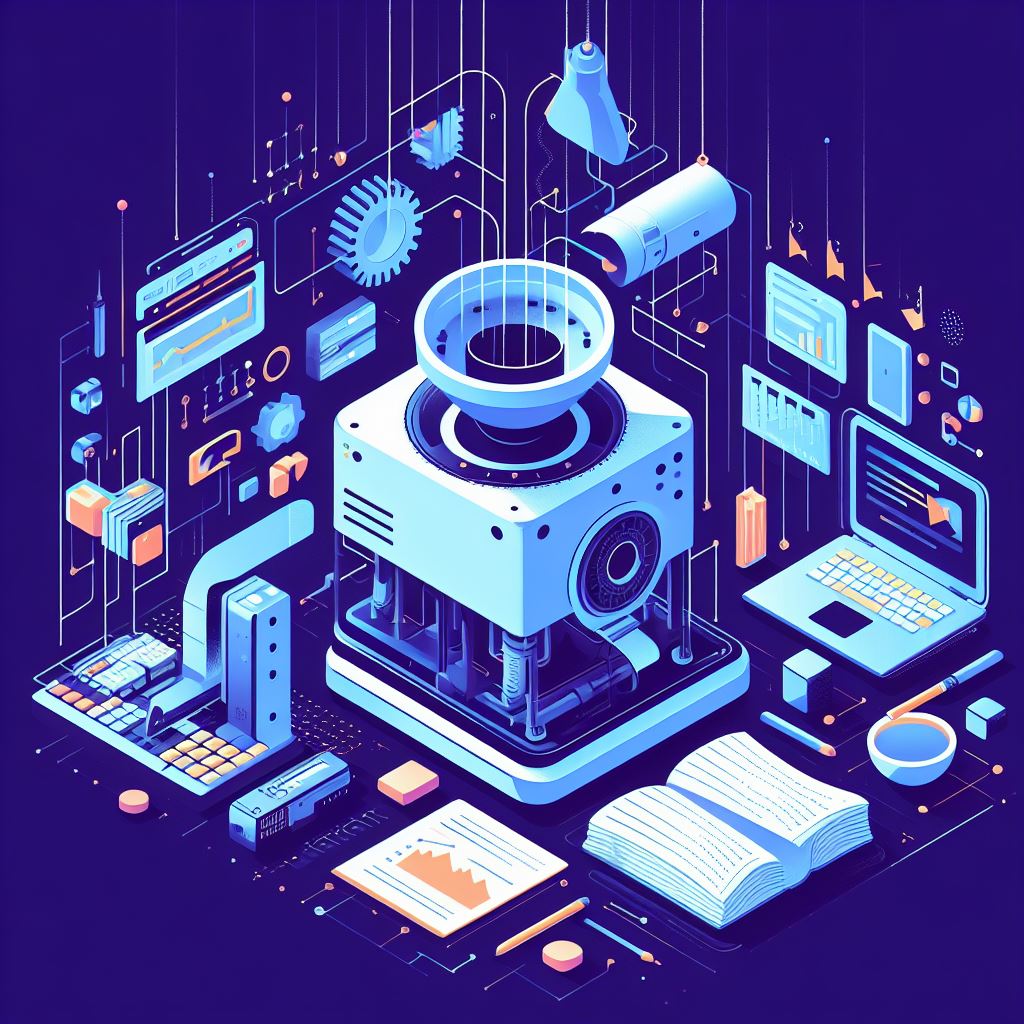Introduction
Unsupervised Machine Learning (UML) stands as a fascinating frontier in the realm of artificial intelligence, unlocking patterns and insights without the need for labeled data. As businesses and researchers delve deeper into this enigmatic field, questions abound.
Table of Contents
What is Unsupervised Machine Learning?
Unsupervised Machine Learning, as the name suggests, involves training models without labeled data. Unlike supervised learning where the algorithm receives explicit instructions, UML discovers patterns and relationships autonomously. Clustering and association are common techniques, providing a foundation for various applications like anomaly detection, recommendation systems, and more.

Understanding the Basics
To grasp the essence of UML, envision a scenario where an algorithm explores a dataset without predefined categories. Instead of having labeled examples to learn from, the model identifies patterns independently, grouping data points based on inherent similarities.
Applications in Real Life
Unsupervised learning finds applications in diverse fields, from customer segmentation in marketing to anomaly detection in cybersecurity. By allowing machines to uncover hidden structures, UML opens doors to more nuanced and sophisticated insights.
How Does Unsupervised Machine Learning Work?
Understanding the inner workings of UML necessitates delving into its algorithms and methodologies.
Clustering Algorithms
Explore prominent clustering algorithms like K-Means and Hierarchical Clustering, shedding light on how they group data points based on similarities.
Dimensionality Reduction Techniques
Discuss dimensionality reduction techniques such as Principal Component Analysis (PCA), emphasizing how they streamline complex datasets without compromising crucial information.
Autoencoders and Neural Networks
Unveil the role of autoencoders and neural networks in UML, elucidating how they extract underlying patterns and structures.
How Does Clustering Work in Unsupervised Machine Learning?

Clustering is a fundamental concept in UML, involving the grouping of similar data points. Popular algorithms such as K-Means and hierarchical clustering help organize data into clusters, revealing inherent structures.
The K-Means Algorithm
K-Means is a widely-used clustering algorithm that partitions data into K clusters based on similarity. Each cluster is represented by its centroid, simplifying the analysis of large datasets.
Hierarchical Clustering
Hierarchical clustering creates a tree-like structure of data points, illustrating relationships at different levels of granularity. This approach is valuable for exploring data at varying levels of detail.
How Does Dimensionality Reduction Work in Unsupervised Learning?
One critical aspect of Unsupervised Machine Learning is dimensionality reduction. But what does it entail, and how does it enhance the learning process?
The Challenge of High Dimensions
In many datasets, each data point exists in a high-dimensional space, making computations complex and resource-intensive. Dimensionality reduction simplifies this by transforming data into a lower-dimensional representation while preserving essential information.
Techniques in Dimensionality Reduction
Principal Component Analysis (PCA) and t-Distributed Stochastic Neighbor Embedding (t-SNE) are popular techniques in dimensionality reduction. PCA focuses on capturing the most significant variations, while t-SNE excels in visualizing high-dimensional data in lower dimensions, preserving local relationships.
Benefits and Applications
Reducing dimensionality not only enhances computational efficiency but also aids in visualizing complex data. This is particularly valuable in fields like image and speech recognition, where handling high-dimensional data is a common challenge.
What Role Does Unsupervised Learning Play in Natural Language Processing?

Unsupervised Machine Learning plays a pivotal role in Natural Language Processing (NLP), transforming how machines comprehend and generate human language.
Word Embeddings
Word embeddings, such as Word2Vec and GloVe, are products of unsupervised learning. These algorithms represent words as vectors in a continuous vector space, capturing semantic relationships and contextual meanings.
Clustering in Document Analysis
Unsupervised learning aids in document clustering, organizing large corpora based on content similarities. This facilitates tasks like topic modeling, sentiment analysis, and information retrieval in NLP.
Advancements in Language Models
Transformers, exemplified by models like GPT-3, leverage unsupervised learning to grasp contextual information in vast amounts of text. This has led to breakthroughs in natural language understanding, enabling more nuanced and context-aware interactions with machines.
How Can Unsupervised Learning Enhance Recommender Systems?

Recommender systems have become ubiquitous in our digital landscape, influencing our choices in content, products, and services. Unsupervised Machine Learning is a driving force behind the efficiency of these systems.
Collaborative Filtering
Unsupervised learning enables collaborative filtering, a technique where the system recommends items based on the preferences of similar users. This approach relies on identifying patterns in user behavior to make accurate predictions.
Content-Based Filtering
In content-based filtering, unsupervised learning analyzes item features and user preferences to make recommendations. This personalized approach considers the characteristics of items and users, ensuring more relevant suggestions.
Hybrid Recommender Systems
Many modern recommender systems blend collaborative and content-based filtering, creating hybrid models. These models leverage the strengths of both approaches, providing more accurate and diverse recommendations.
Autoencoders, and How Do They Work in Unsupervised Learning?
Autoencoders are a fascinating concept within Unsupervised Machine Learning, contributing to tasks like data compression, feature learning, and anomaly detection.
Structure of Autoencoders
An autoencoder consists of an encoder and a decoder. The encoder compresses input data into a lower-dimensional representation, and the decoder reconstructs the original data from this representation.
Applications Beyond Compression
While autoencoders are efficient at data compression, their applications extend to generating synthetic data, feature learning, and anomaly detection. Their ability to capture essential features makes them versatile in various domains.
Training Autoencoders
Training involves minimizing the difference between the input and the reconstructed output. This iterative process enhances the autoencoder’s ability to capture meaningful representations in the data.
How Does Unsupervised Learning Contribute to Image Recognition?

Image recognition is a domain where Unsupervised Machine Learning plays a vital role, enabling machines to interpret and understand visual information.
Feature Extraction in Image Data
Unsupervised learning aids in feature extraction, where the algorithm identifies important patterns and features within images. This is particularly valuable in tasks like object detection and image classification.
Clustering in Image Analysis
Clustering techniques in unsupervised learning assist in organizing and categorizing images based on visual similarities. This is foundational for tasks like image segmentation and content-based image retrieval.
Generative Models for Image Synthesis
Generative models, such as Generative Adversarial Networks (GANs), utilize unsupervised learning to generate realistic images. GANs, for example, consist of a generator and a discriminator, working in tandem to produce authentic visual content.
Is Feature Learning a Core Element of Unsupervised Learning?
Feature learning, also known as representation learning, is indeed a core element of Unsupervised Machine Learning. It involves the automatic discovery of features from raw data, eliminating the need for manual feature engineering.
Autoencoders Feature Learning
Autoencoders are neural network architectures crucial for feature learning in UML. They learn to encode input data into a compressed representation, extracting essential features in an unsupervised manner.
Advantages in Image and Speech Recognition
Feature learning enhances performance in tasks like image and speech recognition, where the algorithm automatically learns to extract relevant features without explicit guidance.
Can Unsupervised Learning Improve Customer Segmentation?
Absolutely. Unsupervised Machine Learning is a game-changer in customer segmentation, allowing businesses to understand their clientele better and tailor strategies accordingly.
Personalized Marketing Strategies
By analyzing customer behavior and preferences, businesses can create personalized marketing campaigns. Clustering algorithms identify distinct customer segments, enabling targeted and effective outreach.
Enhancing Customer Experience
UML contributes to improved customer experience by helping businesses offer products and services that align with the unique needs of different customer segments.
What Challenges Does Unsupervised Learning Face?
While powerful, Unsupervised Machine Learning is not without its challenges. Understanding these hurdles is crucial for effectively leveraging UML in various applications.
Lack of Labeled Data
One significant challenge is the scarcity of labeled data for training. Supervised learning often outperforms in situations where labeled datasets are abundant.
Ambiguity in Results
Interpreting results from unsupervised algorithms can be challenging due to the inherent ambiguity in clustering or dimensionality reduction outcomes.
Overfitting Concerns
Overfitting remains a concern in UML, emphasizing the importance of selecting appropriate algorithms and parameters to prevent the model from capturing noise.
How Does Unsupervised Learning Contribute to Pattern Recognition?

Pattern recognition is at the core of Unsupervised Machine Learning, where algorithms discern underlying structures within data.
Recognizing Complex Patterns
UML excels in recognizing intricate patterns in data that might go unnoticed through manual analysis. This capability is particularly valuable in fields such as image processing and natural language processing.

Applications in Healthcare
In healthcare, UML aids in pattern recognition for disease diagnosis and prognosis, helping medical professionals make informed decisions based on complex data patterns.
FAQs
1. How does Unsupervised Machine Learning differ from Supervised Learning?
In supervised learning, models are trained on labeled data with explicit instructions, while unsupervised learning explores unlabeled data to discover patterns autonomously.
2. What are the common challenges in evaluating unsupervised learning algorithms?
The absence of clear labels poses challenges in traditional evaluation metrics. Common metrics include Silhouette Score, Davies-Bouldin Index, and Adjusted Rand Index.
3. How do autoencoders contribute to unsupervised learning?
Autoencoders, with their encoder-decoder structure, are versatile in tasks like data compression, feature learning, and anomaly detection by capturing essential representations.
4. What is the role of unsupervised learning in image recognition?
Unsupervised learning aids in feature extraction, clustering, and generative models for image synthesis, contributing to tasks like object detection and image classification.
5. Can unsupervised learning benefit healthcare analytics?
Yes, unsupervised learning offers solutions in healthcare analytics by clustering patients for personalized medicine, detecting anomalies in medical imaging, and contributing to predictive analytics for patient outcomes.
6. How does dimensionality reduction enhance unsupervised learning?
Dimensionality reduction simplifies computations and aids in visualizing complex data by transforming high-dimensional data into a lower-dimensional representation while preserving essential information.
7. What are the key techniques in anomaly detection within unsupervised learning?
Isolation Forests, One-Class SVM, and Autoencoders are popular techniques for anomaly detection, identifying deviations from established patterns in various applications.
In this detailed guide, we’ve navigated through the intricacies of Unsupervised Machine Learning, addressing key questions and providing insights into its applications across diverse domains. Whether you’re a beginner or an experienced practitioner, this comprehensive overview serves as a valuable resource in understanding and harnessing the power of Unsupervised Machine Learning.


